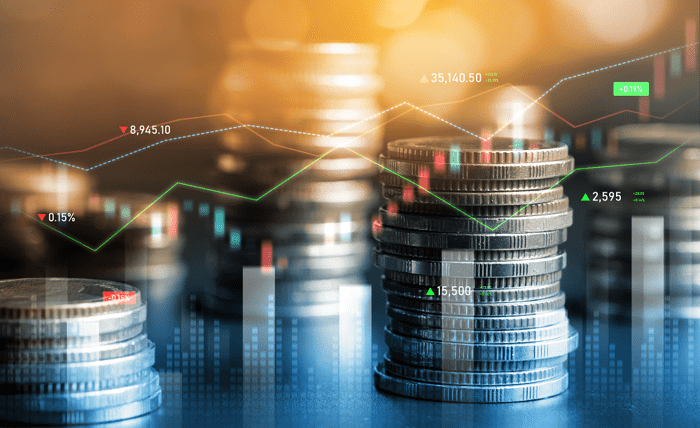For as long as I can remember, I thought that economic growth simply wasn’t possible in the long run. After all, we have a single planet with limited resources, right? This notion completely changed when I expanded my knowledge on how real growth occurs and what GDP measures.
Understanding the Components of GDP
GDP (Gross Domestic Product) takes into consideration the expenditure on the market value of all final goods and services within a nation during a given time frame. The important phrase here is ‘final’—raw materials and intermediate products are excluded; only the end product available for purchase is considered.
Let me illustrate this concept with an example that I found very useful. Imagine a simple economy composed of three individuals: Anne produces hammers, Bob provides nails, and Charlie offers tree-nailing services (yes, I know it’s silly, but just bear with me). Each individual works one hour a year, and there is only $8 circulating in their economy.
Charlie buys nails and hammers from Anne and Bob for $4 each. Later, Anne and Bob use their earnings to pay Charlie $2 each for watching him hammer nails into trees for each nail. The GDP here is as simple as 4 nails multiplied by $2 each, which gives us $8. That was easy.
The Benefits of Advances in Technology
Now it gets fun. In developed nations, work hours generally decrease as GDP goes up. This is often seen as strange and illogical until we consider the innovations, where hours of Controlio typically go down.
Returning to our scenario, imagine if Anne figured out how to produce two hammers in one hour by splitting them more efficiently. Bob does the same with his nails, and Charlie learns to hammer nails at twice the speed. All of a sudden, our small economy now has the ability to use the same resources and time to produce double the output.
This is a pattern that holds true in the world as well. Looking back at all the productivity tools I use on a daily basis, including the Controlio app for tracking work efficiency, I notice that no matter the amount of materials I need, technology is always drastically increasing our productivity.
Multiple Opportunities To Refocus Growth
If productivity increases but the amount of money available stays the same, then we can expect one of the following to happen:
- Money changes hands more often: The same dollars change hands a greater number of times as people transact more.
- Prices drop: There is decreased demand for products, which sooner or later leads to a decreased supply to match the higher supply, though this rarely happens in developed economies.
- The economy produces more value: new money is created, which enters the system, replacing the older money to match productivity.
In our example, maintaining real growth with no inflation would mean that if $8 GDP was produced with 8 nails, doubling the money supply to $16 would also double GDP.
Real-World Applications
This is not merely theoretical, however—consider breakthrough medications such as Ozempic. While these innovations do not necessarily consume more resources than older treatments, they can create immense value by improving health outcomes and potentially lowering future healthcare costs.
I recall the era of emerging smartphones—although they replaced a phone, camera, and music player, they remodeled their function and required less raw material, increasing value exponentially unlike anything previously.
Addressing Common Criticisms
Critics often argue GDP misses capturing quality of life, inequality, and unpaid work (like parenting). While these are valid concerns, it is also fascinating to note that countries with higher GDP per capita rank above average across all quality-of-life metrics.
Whether we look at the Human Development Index, environmental protection, democratic institutions, median income, or even life expectancy—there is a drastic and consistent outperformance by wealthy nations compared to poorer ones. This is not a coincidence, as it reflects the reality that prosperity, progress, and abundant resources tend to go hand in hand.
The Environment Factor
Resource depletion and environmental degradation are real problems in several locations, but the notion that boundless growth is not possible is misguided. True growth requires boundless imagination and innovation, not resources.
The cleanest and most environmentally conscious societies tend to be the most prosperous. Innovation drives efficiency. With regard to the energy industry, electric vehicles improve performance while lowering emissions, and solar panels provide a source of clean energy that becomes more cost-effective each day. Furthermore, incandescent bulbs can now be replaced with LED lights, which use 75% less energy while providing better lighting.
My Personal Experience with Growth
In my professional life, I’ve seen this phenomenon take shape. Initially, I believed working longer hours would lead to increased earnings; however, as I developed better professional skills, I began adopting more efficient tools, enabling me to achieve more within a shorter timeframe while delivering greater value.
And the same is true for entire economies. Growth is not about consuming more resources or working harder; it is about smarter work and greater value created by the same inputs.
Final Reflections
Innovations in technology have radically transformed the world by offering life-saving medical treatments alongside world-shrinking communication technologies. When someone critiques growth as relentlessly unsustainable, they miss the crucial element: the very essence of sustainable growth stems from human ingenuity, not the consumption of resources.
Next time you hear the argument that infinite growth is impossible, think back to the simple economy anecdote. The ability to actively design systems and structures for the future without compromising the planet’s resources is achievable when paired with creativity, efficiency, and boundless innovation. That is not merely an economic concept; it’s indeed humanity’s unparalleled competitive edge.


